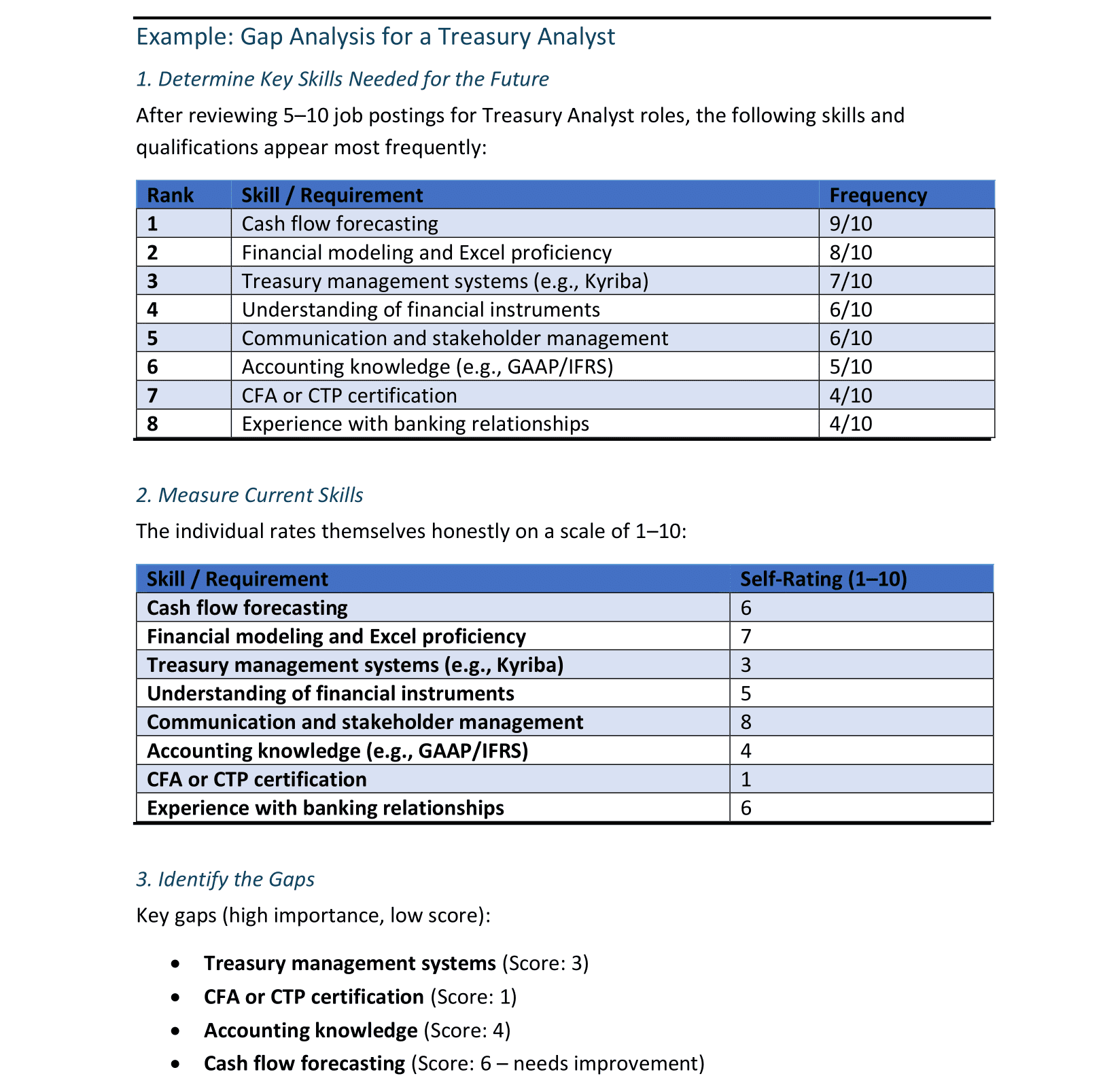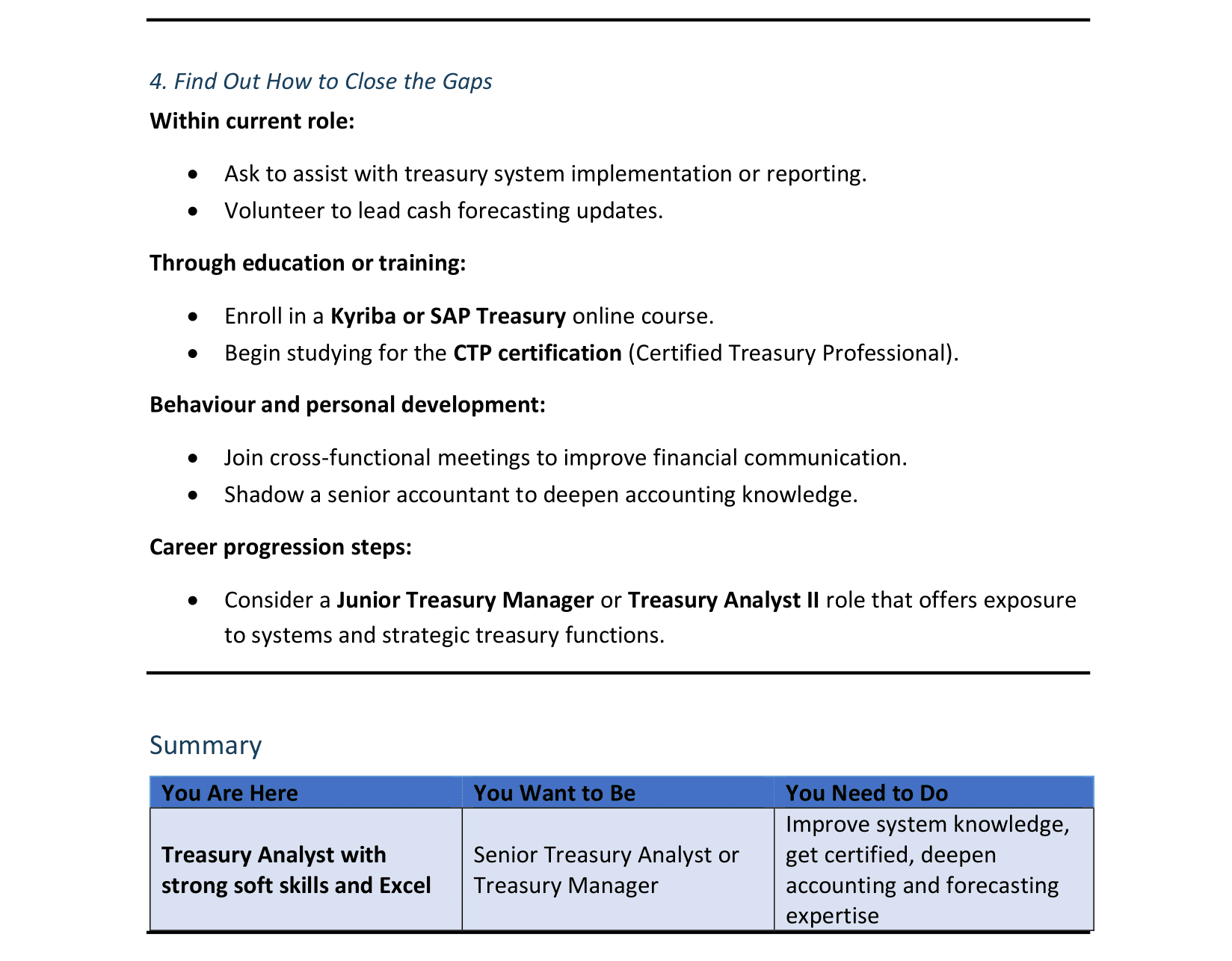
After writing about SWOT analysis and how it can support strategic career planning, the next logical step is taking action. A SWOT helps you understand where you are now and where you want to go. But how do you bridge that gap? That is where a Gap Analysis comes in.
A Gap Analysis helps you identify what knowledge and skills you need to acquire or improve in order to fill the gap between you and your dream job.
The analysis contains the following steps:
1. Determine key skills needed for the future.
One of the easiest ways to do this is by analysing job advertisements for the position you are aiming for.
- Look at several recent job postings to see what qualifications, competencies and experience are repeatedly mentioned.
- Number each required skill or knowledge area listed in the job ads.
- Combine the results into one list and order the items from most to least frequently requested.
This gives you a clear, realistic picture of what employers expect from someone in your target role.
2. Measure your current skills
Now take the compiled list and compare it to your own skill set.
- Rate your level for each item on a scale of 1 to 10, with 10 meaning “fully mastered.”
- Be honest, as this is for your own development and not a performance review.
This step allows you to see where you already match the expectations and where improvement is needed.
3. Identify the gaps
Look at the skills that are most frequently requested but where your score is low or not present. These are your key development areas: the gaps that stand between you and your goal.
These may include:
- Technical knowledge
- Soft skills
- Certifications
- Specific experience
- Industry exposure
Once you see the gaps clearly, you can start thinking about how to close them.
4. Find out how you want to close the gaps
Start from your current situation and explore your options:
- Within your current role:
Can you take on new responsibilities that align with your future goals? Can you let go of tasks that are less relevant? - Through education or training:
Would a course, certification or workshop help you build a missing skill? - Behaviour and personal development:
If you want to improve public speaking, for example, look for workshops, coaching or opportunities to practise. - Career progression steps:
Do you need an intermediate role before getting to your dream job? If yes, what type of position will help you build the right skills and experience?
What comes next?
By combining a SWOT analysis with a Gap Analysis, you will have a clear understanding of:
👉 Where you stand today
👉 Where you want to go
👉 What you need to do to get there
The final step is turning this insight into a concrete strategic career plan. In my next blog, I will guide you through how to create that plan step by step.
If you are contemplating your next career step and would like to talk about this, don’t hesitate to contact us.
Strategic Career Planning: How to use the SWOT analysis




